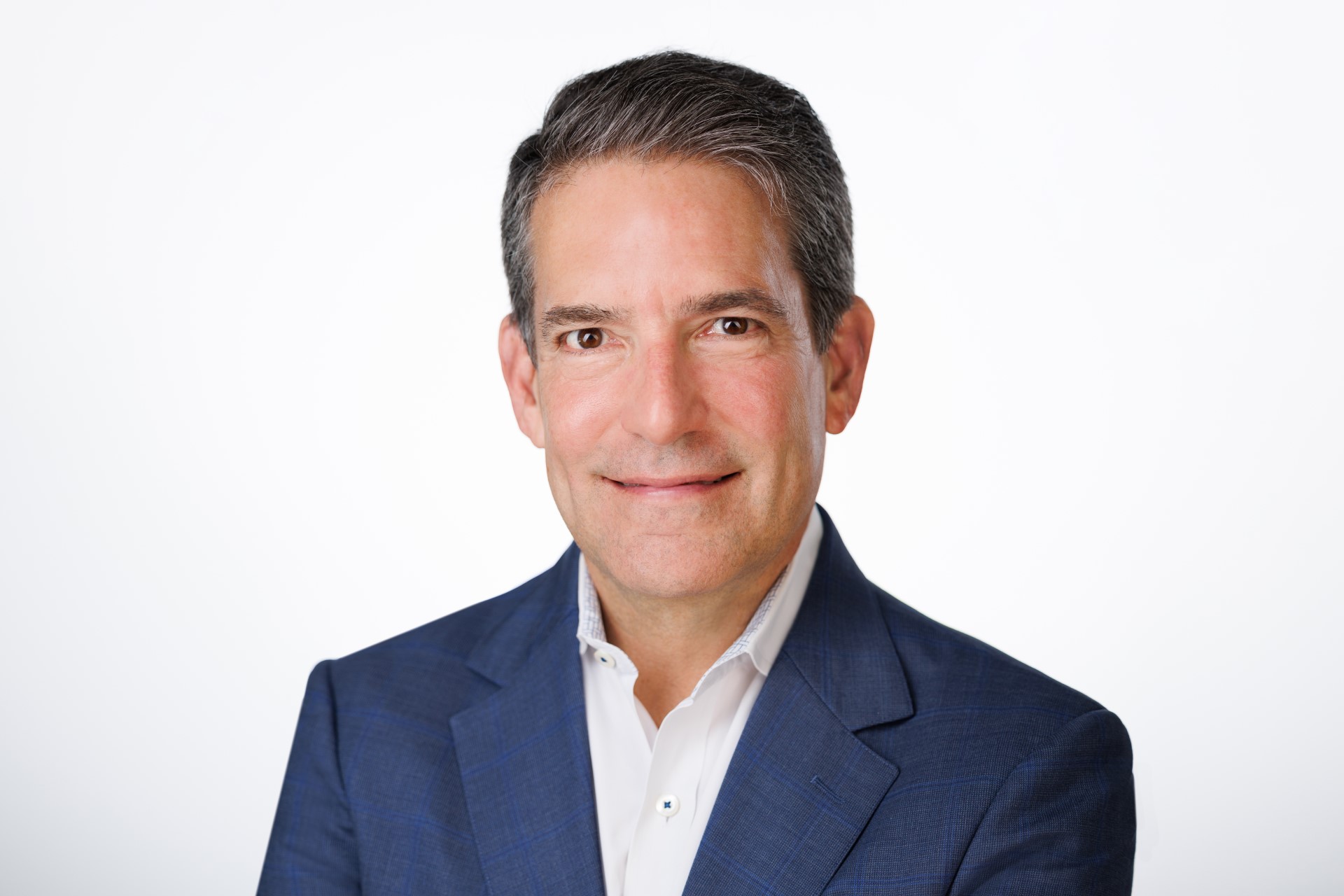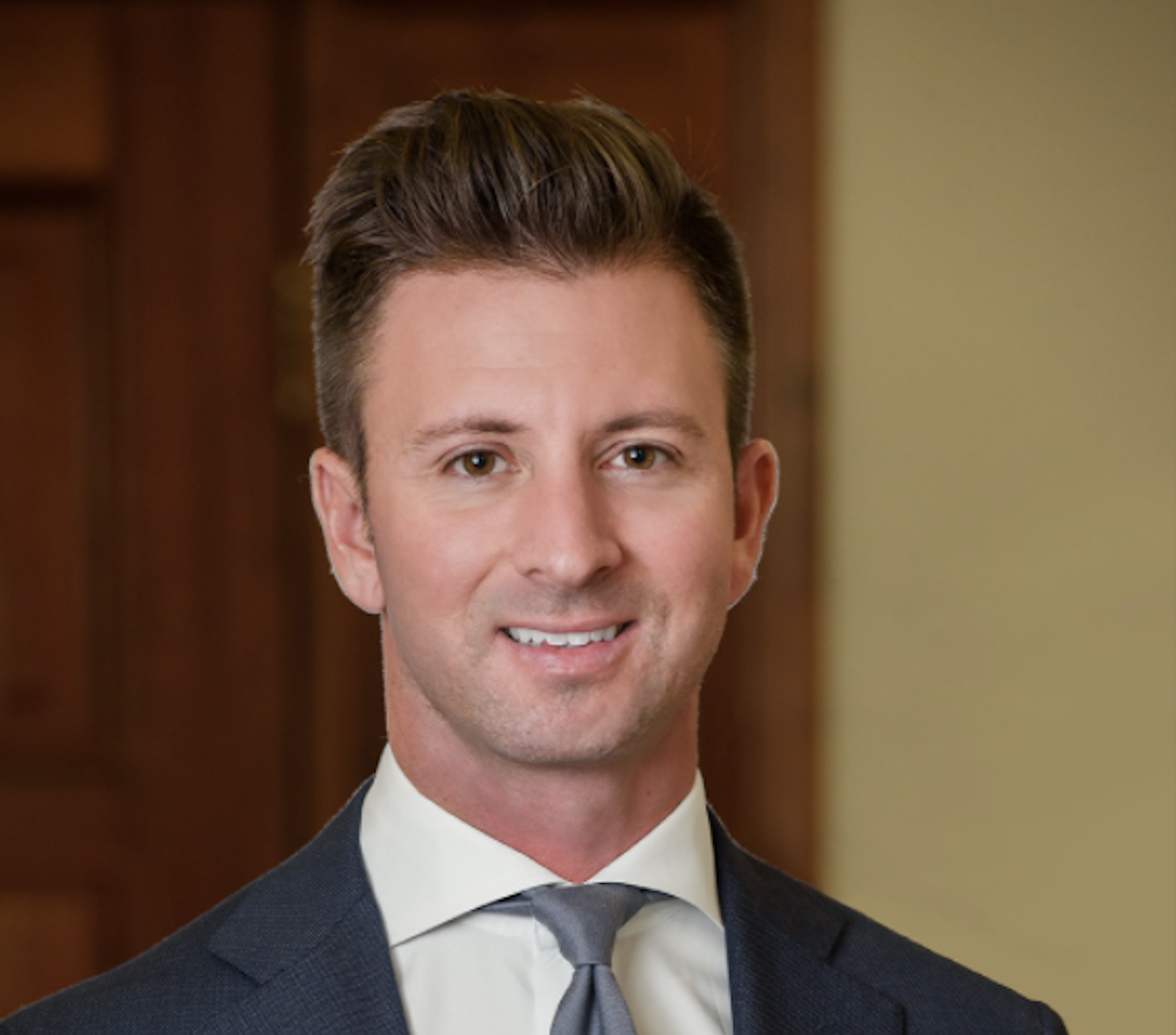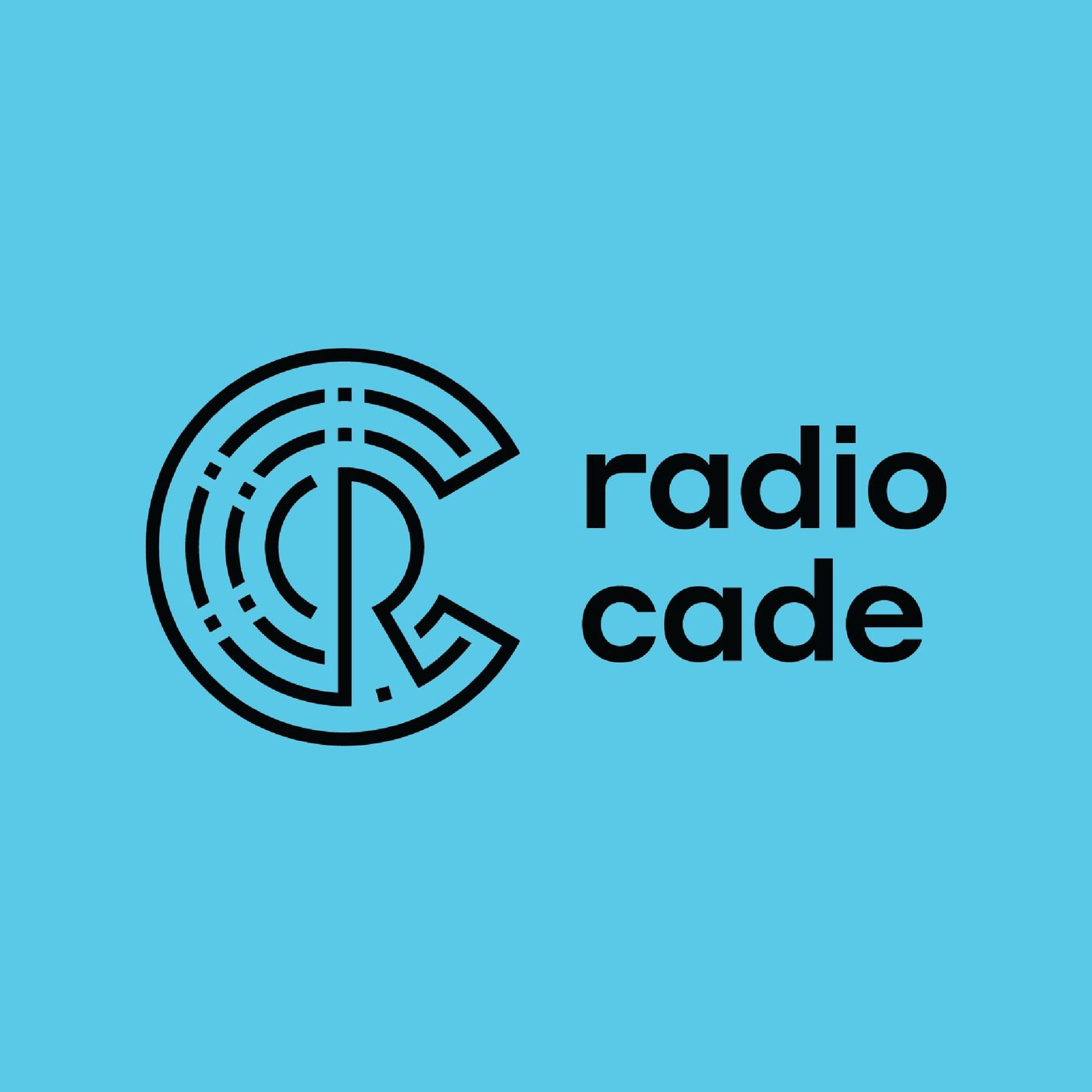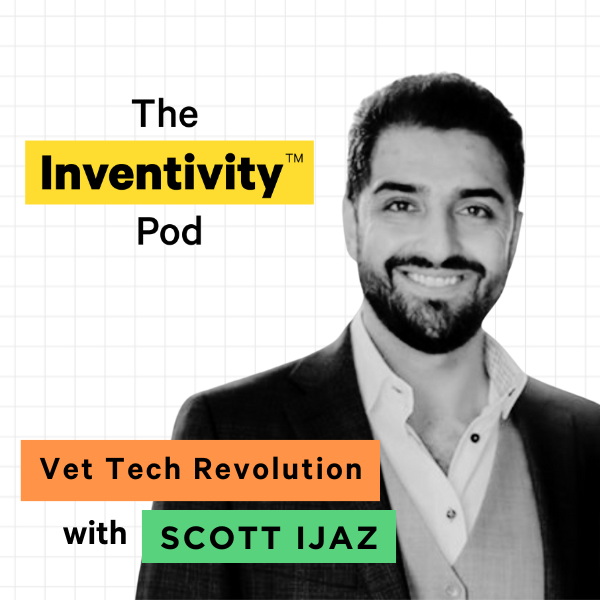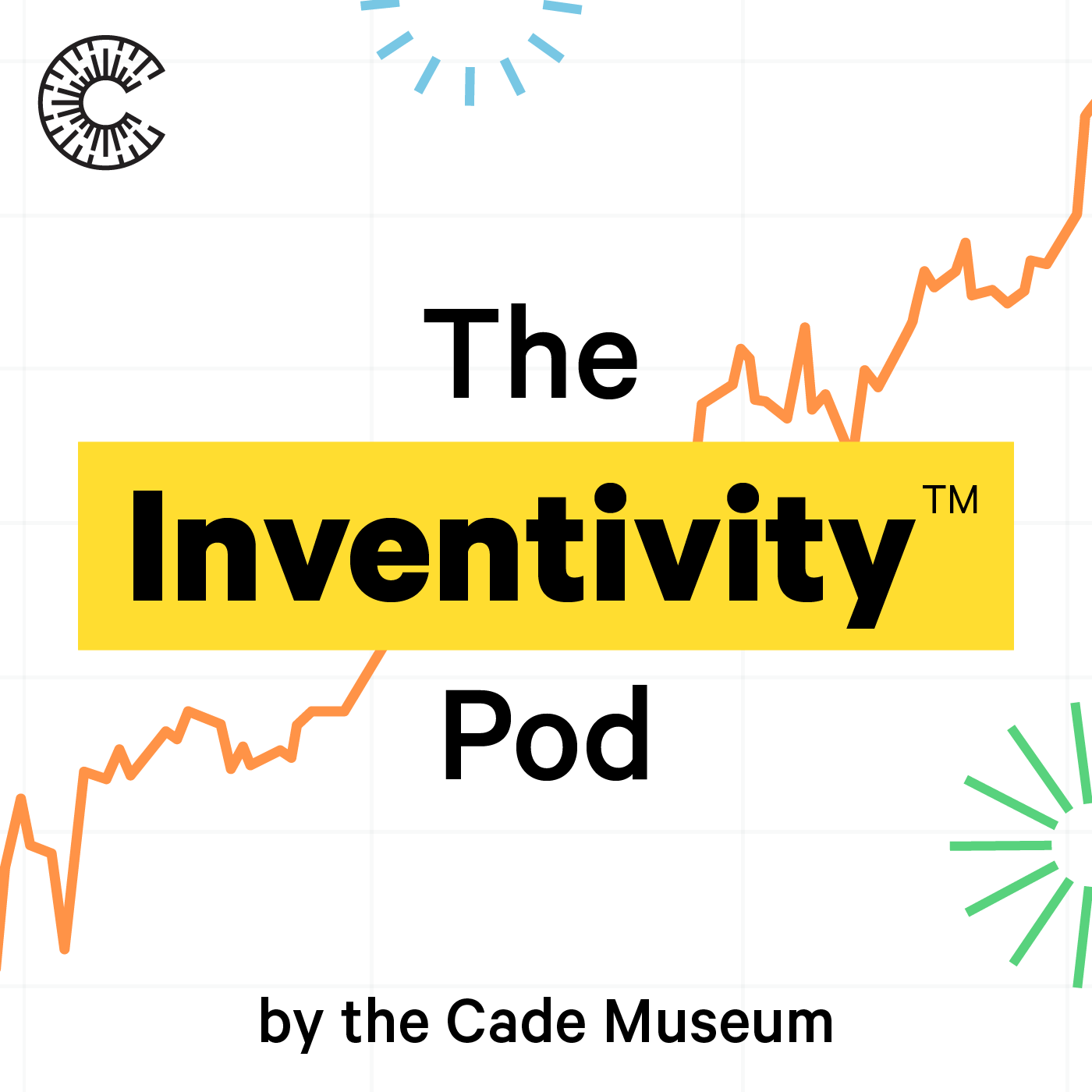Show Notes
Every day Veterinarians help animals heal, and part of that process is keeping an eye on the animal's respiration, heart rate, and temperature using wires and probes. This can be difficult and dangerous, as animals are uncomfortable being attached to wires and can lash out at the vet. Vik Ramprakash, CEO of Structured Monitoring Products Inc, has created a solution, VetGuardian. A wireless device that sits a few feet away from the animal and requires no connection points to monitor the animal's vitals. Now, veterinarians can provide 24/7 monitoring that is non-invasive, while keeping the animal and themselves safe.
TRANSCRIPT:
Intro: 0:01
Inventors and their inventions. Welcome to Radio Cade the podcast from the Cade Museum for Creativity and Invention in Gainesville, Florida, the museum is named after James Robert Cade , who invented Gatorade in 1965. My name is Richard Miles. We'll introduce you to inventors and the things that motivate them, we'll learn about their personal stories, how their inventions work and how their ideas get from the laboratory to the marketplace.
James Di Virgilio: 0:37
Welcome to Radio Cade. I'm your host, James Di Virgilio. Today, we're going to talk about wires. Do we need them? Most of us are used to existing in a world now without wires, whether it's Bluetooth or other mediums, but how about wireless medicine? What if we can detect heartbeats and other vital signs without having anything touch your body at all? My guest today is Vik Ramprakash. He is the CEO of Structured Monitoring Products Incorporated, and he is working on just that. Vik, welcome to the program. So Vik, tell us about what you've developed. This seems almost futuristic, right? As a kid, I can remember watching movies and films where in the future, there's no doctor, it's just a machine sort of looking over you and nothing is touching you and its sensors, but you are doing this in real life.
Vik Ramprakash: 1:22
Absolutely. So basically if you put it this way, when you go to doctor's office, the very first thing they want you to do is to check how you're doing initial assessment, like at your heart rate respiration and your blood pressure. So think about every time they have to connect you to wires. And I think we live in this 21st century where things are getting more and more wireless. So one of my initial thoughts and ideas was like, what if we could do away with this virus? So that's how I started this process of thinking about it and making something towards that goal.
James Di Virgilio: 1:52
That seems extremely difficult. How difficult was it to create something that can detect a heartbeat or your breathing without contacting you?
Vik Ramprakash: 1:59
I would say I'm not the inventor for this technology. It's University of Florida where this technology was born at . So taking a step back, my background is in remote sensing technology. So when I started working with this technology, it's basically working with Landsat imagery, satellite imagery, and try and review and see how things work out. So if we could think of the same way University of Florida's electrical engineering department, they started working with sensors and Dr. (inaudible) Lynn out there has focused on Doppler data centers, which is the same kind of sensors , a useful weather technology. What he was able to do was to miniaturize it almost to a size of a credit card size, and his application was to use it for the human side. Now, here I am with a remote sensing degree and I was doing my MBA at University of Florida. I said, then I met him through, off the technology licensing from the university and we hit it off. And we said, well , this is, this technology is really cool, right? So you have this, which you have patents on, which could detect vital signs with no contact. And I said, why don't we using this to get into the market? We start from there and then we said, okay, let's look at an application. Where can we get this out? This is about a few years ago, but probably about five, six years for my wife just gave birth to my son and he had some respiratory issues. So I was like, if I could really see him, it be a button, a video camera, like the baby monitor and whether we could just see how he's doing, like, yeah, obviously you can see him through the communicator and see how he's doing, but can we really see how he's breathing? So I think that's the Genesis of the idea of how, if you can detect somebody's breathing with no contact was the first step of looking through this.
James Di Virgilio: 3:36
So you can monitor your son 24/7. Not that it's always important to be constantly monitoring your own vitals that can lead to anxiety, but you could, if you want to do , and there's no invasion on your child who is sleeping there in his crib, he doesn't even know anything is happening. It's just a way for you to monitor what's happening. Right?
Vik Ramprakash: 3:53
Exactly. That's the concept we started off with and it actually worked on , when we started initial analysis, we had a lot of research gone into the technology. We worked with the Florida High-Tech Corridor Technology folks. They gave us a grant for $50,000. And then what we started looking at when we started going to metal conventions, you know, it's a great idea. There's a lot of people trying to do the same thing. What you were trying to do as you noticed is that of Japan and South Korea and even MIT has got something pretty similar to what we were doing, but here's the thing, right? It's the human variable that is you need to get right. A hundred percent of the time. You cannot say 99 of a hundred times. It's not going to work because it's a child. And which Sharon wants to know that the device didn't work. When you really want to know how the pleading of the child is, right. I'll set up an alert if the building's not doing good or something like that. So we started looking for other avenues and that's how we got into the veterinarian side. And that's how we started focusing on how to get it out and retain an application.
James Di Virgilio: 4:49
Now, I grew up having a Jack Russell terrier as a dog. Those are small dogs. They tend to think that they're huge dogs. And we named him Napoleon because he felt like he was a world's conqueror. And there was really nobody that he would back down to. So if you had to take him to the veterinarian, it was not a pleasant experience. The vets are always a little nervous that he was going to wind up not liking what they were doing. Maybe he was going to snap at them. So income's your solution for veterinarians. They don't have to actually contact my dog, Napoleon, to take his vital signs, right? They can just put this device in front of him. He's just sitting there. He's relaxed where they're with him and it's going to wind up at least checking on his vital so they can get a baseline for what it's looking like.
Vik Ramprakash: 5:26
Exactly. And that's the concept we're building towards . So, so to again, take a step back. So when I was at a medical convention, trying to show the device for baby monitoring, I met Dr. Bregman. Who's now on our board advisor for the company. And he came up and asked me like, Hey, can you do this for animals? Right? So can you detect animals breathing ? And I said, for a minute, I wasn't sure how it would work for him. And then he explained to me how on a day-to-day basis that he sees almost like 10 animals a day or something, and that's an industry average, and there's two things going, right? So you have vet techs who get the animal intake process, and then he sees them. And if you can imagine them, they come in, he has to take the vitals and then he starts analyzing what needs to happen. Next? The second big thing is surgery. Now, practically every companion animal, you have dogs or cats have to be able to neutered or spayed, and now comes to a point like you need to monitor them post -surgery. Usually what they do is they have specifically one or two days, they focus on surgery, surgery days is what they call it, and these animals are all lined up for surgery. And when they do a surgery, he does one then comes the next one and the next one, and then it's a post-op surgery. What happens at the point of time, they need to monitor how the animals are doing. At this point there's no other way, other than just going physically checking how the animals are doing, right? So you go in and check. You visually see them. Now, if it's an intensive case, then what happens is that the foreign buyers check on the animal every 15 minutes, get the vitals down . And then you go to the next animal. So this is his main point with other ingredients . So you have an intake process where sometimes, you know the animal very well. That's fine. But what happens when it's a feral cat, or anything of exotic pets? Are you going to put your hand and try to touch them? Are they going to respond back the same way? Then you have never meet a veteran who's not bitten. So we're trying to move away from a less stress point of view for animals, as well as the right nutrients , do the intake process. And then also the postop recovery. And also the third case, we also found out by Dr. Bregman . He told us is that overnight hospitalization of animals. So if we talk about veterinarians who are not involved in emergency clinics, basically what they do is if the animal comes in, then it's pretty much a case where they can't handle. They'll usually refer them to an emergency clinic down the road, or sometime three miles away. Right? So the best way to now with our device with guardian is you're able to monitor the animal throughout the night. And because it's also got a video feed, the vet doesn't have to be at the clinic so you can go home. He can take his phone out and see how the animal is doing. If the vitals are spiking up, they can go back, check on the animal. But the biggest difference is it's not like one of those cases, like you leave the animal all night . You don't know how the animals doing it , worrying about it. Then you come back the next day and hopefully animals alive. So that kind of case will be eliminated because here you at least know that they'll be able to see the animal. And we also have a reporting mechanism. So end of the day, they come back the next day you have all the history of the animal. Was there any pain recovery? If the animal was moving around? All that analysis can be done.
James Di Virgilio: 8:29
Okay . So I'm a veterinarian, I have 15 animals that are overnight staying at my office and I go home. How many devices right now from vet guardian would I need to be able to monitor these animals? Is it one per animal at this moment?
Vik Ramprakash: 8:43
Yeah. Right now it's one per animal. And usually they will not have more than a few animals because it's like if they have so many animals, it's kind of hard to monitor them at the same time. So it's one per animal at this point in time and in the future I would love to improve the technology, so you get more than one at the same time using our devices .
James Di Virgilio: 9:00
And as it stands now in my veterinarian office, if I go home for the night and I don't have this technology, I'm assuming the animals are monitored either by things I've hooked them up to like it would be at a hospital or maybe they're not monitored at all until I come back the next morning.
Vik Ramprakash: 9:15
Exactly. And this is the thing, right? They cannot leave an animal hooked up to any wires. And this comes back to the first point you made if humans don't like wires, if you don't like to be hooked on to wires the whole night, how do you think animals are going to react? So the vet has limited choices. Either. The animal is sedated with Verizon , but he needs to come and check at least once or twice and to see how that is or to just leave the animal over night with no other information on the animal until he comes back the next day morning.
James Di Virgilio: 9:43
Yeah. My dog Napoleon would have lasted maybe two or three seconds before tearing off all of those wires. So when you talk to veterinarians about this, is this something that they are just automatically excited about? Like, this is obviously an improvement. I would want to adopt this or is there some hesitation or are they skeptical or is there a reason why they would say, yeah, I don't need that. It's nice, but I don't need that.
Vik Ramprakash: 10:04
So here's what I love about it. So when I start talking over it and about this device, initially, they're not able to visualize what it is, right? And it takes a few minutes when I start explaining. So there's no connection, there's no wires at all. And then I really see that aha moment when you see the eyes go up and they just, wow, you're telling me that there's a device, but I can just keep it in front of the animal and gets his vitals with no wires. I mean, that just blows their minds. So that really, really helps them a lot. Now, the old school veterans who have done the same way of working with animals, that's fine. But what also recognized is that this product is something which will grow into the industry. It's like, yes, there are attendings who are buying the device at this point in time. They like using it. And for example, we have one of them attend San Diego Zoo. We talked to Damon out there and he says, yeah, this is exactly what you said it is . You set it up, you set it on the animal and you walk away, then pick your phone up and see how the animal is doing. Think about taking a lunch break, right? You finish the surgery, you set the animal up . You want to take a break. We want to grab the coffee. You pick up your phone and see all the animals doing in those 20 minutes. So that the points that you learned at this point in time, how retains a benefit from using the deceive.
James Di Virgilio: 11:12
And if you want to see this device, if you're listening to the podcast and you're thinking, what does this look like? Or how does it work? You can go to vet guardian.pet, or you can just Google vet guardian and it'll pop up as one of your top search results. And they have a nice video on there where it shows you what it looks like, how it works, and you kind of get a better feel for what the device itself looks like. Now let's just talk for a second Vik about the cost . So I'm a veterinarian. I'm excited about this. I've had my aha moment. This is going to improve my practice. Are you finding that the cost of the devices in the range where they're saying, yeah, this is definitely worth it, or is it sort of a luxury where they say, hey, at the price point, it could improve my practice, but maybe it's just too much for me to take on.
Vik Ramprakash: 11:50
It's actually a great point. Here's the thing, right? So we price this the same price as they would buy a surgical unit. Now a surgical unit costs anywhere between $3,000 to about $6,000. They use it for , for surgery basis. So think about a device pretty much the same price point. We're not talking too expensive, not in the 10 thousands or something like that, but here's the point that is really important. You can now start using the device to post monitor animals. The only way they do right now after surgery is just physically looking at the animals, how it's doing. And it's a pen and paper based process. Every 15 minutes, if the animal is doing well, they're not down the hardware , respiration and temperature. They come back every 15 minutes. And this is a purely a paper-based method to think about a process. Now that they're able to do this all automatically, all information is created, finally, in a PDF file for that animal patient record. And then you can also start charging your customers because now you have a way of telling them, look, this is a post-op medical recovery process we follow, and it just charges another five or $10 on the bill to the customer. So the pretty much within six to seven months, they make up the money for all their spent on the device
James Di Virgilio: 13:03
And all the free time that they mentioned. So , so is there anyone else doing this? This idea obviously seems great to me having heard lots of ideas, this idea, it seems like it's obviously simple to implement and it's going to save me time as a veterinarian . It's going to save my staff time and I'm going to get better results and not a secret per se, but in the medical community, including with humans, paper-based charting is still the norm. And what you just mentioned is also true of humans making rounds, right? I'm a finance guy, I'm an investor. I live in a world of algorithms that automatically chart for me, everything that happens. There's alerts, there's highs there slows, but with humans, we're still jotting down a lot of what has gone on and there is not a centralized track record. So you're also improving record keeping, as you mentioned with this device. So is there anyone else doing this? This seems like other people must've thought about this. Do you have competitors?
Vik Ramprakash: 13:51
If I had any competitors getting into the animal side or not? At this point in time, we seem to be the only ones in the market. We get to know what's happening because we go to trade shows. We talk to people around, via tying up with some of the distributors out there, which are pretty prominent in the vet industry. As far as I know, when it comes to complainant animals, where the very first ones are doing this.
James Di Virgilio: 14:10
So what is the biggest hurdle for this not being successful? So to speak, what would trip you up aside from just a failure of the technology itself? What would not allow this to gain mass acceptance?
Vik Ramprakash: 14:21
Okay. So what are the three? The two or three reasons either the product was not accepted because it's (inaudible) behind its time. Our two is so much investment put into the company that you're not getting the value of return and we don't get the value of return . Then obviously, even though you have general acceptance, you're not able to pay the kind of dividends what people are looking for. And then it fails. They're able to raise more money to keep everyone happy. All the money we raised is from the government like state funds and two from family and friends. And we hit milestones every single time. We said, we're going to do something. Now we could have raised money earlier. And I'm not saying that I didn't try, but what I've always found is that the more we invest our own time and efforts, the more value, we are able to get out of the company at this point in time. So basically what's happening is we ended a point where we need to scale up and scale up quickly. And we have to start working towards getting to a larger market. Now let's say it does not happen. We don't get a larger market. The fallback is we continue to make sales and we continue to grow. Not to the expectation we have, but we grow to a point where it gets mass acceptance. And other reasons we're doing that is we're trying to tie up with a local couple of universities around the country. One is Mississippi State University and Louisiana State University to take the device and have the Podesta to publish papers on it. What we want to do is the next generation of veterinarians to start using the device in their vetting, in schools and when they come out of the schools, they really get to know how to use the device. And this would be a general acceptance. And we hope that you would create a requirement like you would need the device as you would need a better status corpse or something like that.
James Di Virgilio: 15:55
Well, it certainly sounds like you have a good plan. And again, to me, it sounds like you have something that is an obvious improvement. We here at the Cade look forward to tracking your product . Now, taking a step back and talking about yourself, you were born in India, you came to the U.S. And studied at Ohio State and now you're here inventing things. What led you to want to become a problem solver on your own? Sort of, hey, let's take on these challenges versus just taking a more traditional track where you have a job instead.
Vik Ramprakash: 16:24
Yeah. So I think of being an entrepreneur, I think it's more like you were born with an artistic gift or something. So I didn't know that I wanted to be an entrepreneur. It wasn't my idea, but I had an effect of like a , how do I make things better in life? I mean, the question was always about why, why are things this way? Why are things that way? So that always drives me to figure out, okay, what can we make things better in life? So the simple things which, you know, take it for granted, for example, I was reading this book about how the initial cars were created in the mid 1950s. When you open one side of the door and close the other side of the door, the other door on the other side would open up. So things like this is just invention and things get better and better during time. So I just fit into the mold of someone who wants to make things better. And for coming back to the wife's example, it's a small thing. I mean, people can live with wires, there's no problem, but there's some segment of the human population who don't like wires. So why not give them something which they do and I'm trying to solve the problem.
James Di Virgilio: 17:21
It's interesting to hear you talk about asking the why question. And obviously you mentioned the story of human innovation is really improvement, which is very true when it comes to efficiency, especially, and I'm already thinking, we start with this kind of device, right? But then in the future, you may have artificial intelligence working on you entirely. And then a human is maybe somewhere else. And you could think of a wide range of applications where that's beneficial, whether it's in the military field or it's in a disease scenario during a pandemic. Now you're not going to have doctors and nurses contacting as often their patients directly, if they don't have to and of course you can imagine a ladder of improvements from there. So leave us Vik with some words of wisdom, you've barked on this journey, you've acquired a lot of experience. You've had a lot of highs and lows like any other entrepreneur, what are some words of wisdom you would share with our audience about really anything that you've encountered that you feel is just a really important thing that others could benefit from?
Vik Ramprakash: 18:15
So there's one thing I just, I mean, this happened like last year we were using the device and Akron Zoo, we're getting the vitals of a lion, a sedated lion. They had just finished surgery and they said , look , let's use a device and get the vitamins . So we set this up and then we were lucky enough to hold the paw of the lion. And when feeling this huge paw a thought occurred to me, and I tell this to a lot of people who I meet nature has made this land , right? I mean, it's taken evolution and got to a point where it just create the most powerful beast in the world. And here we are mankind, I'm able to get the titles with no contact. So it just put me in a phrase that no nature at some point may have slowed down the evolution of nature of what it does, but humans continue to evolve and we can evolve to the pattern and we continue to work with nature and make things better, I think will just completely be a better society as we more ahead.
James Di Virgilio: 19:09
And that is definitely the goal right of innovation in the first place. As you mentioned, see the world around you, look at what can be improved, take that chance and embark on the journey of trying to improve it. Vik, thank you so much for joining us today. I'd be remissed if I did not mention, of course, that you finished fifth, amongst many, many competitors who were very, very competitive in the Cade prize, which rewards inventors really from around the South and entrepreneurs who demonstrate a creative approach to addressing problems in their area of expertise. Vik, you are the CEO of Structured Monitoring Products Incorporated. Thank you so much for joining us on the program today.
Vik Ramprakash: 19:44
Thank you. Thank you, sir.
Outro: 19:46
Radio Cade is produced by the Cade Museum for Creativity and Invention located in Gainesville, Florida . This podcast episodes host was James Di Virgilio and Ellie Thom coordinates inventor interviews, podcasts are recorded at Heartwood soundstage and edited and mixed by Bob McPeak. The radio Cade theme song was produced and performed by Tracy Collins and features violinists , Jacob Lawson.
